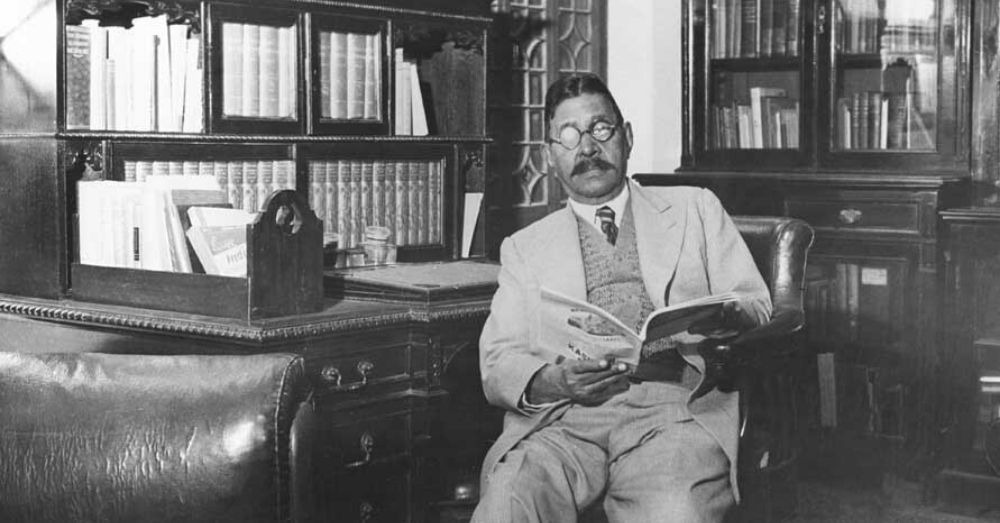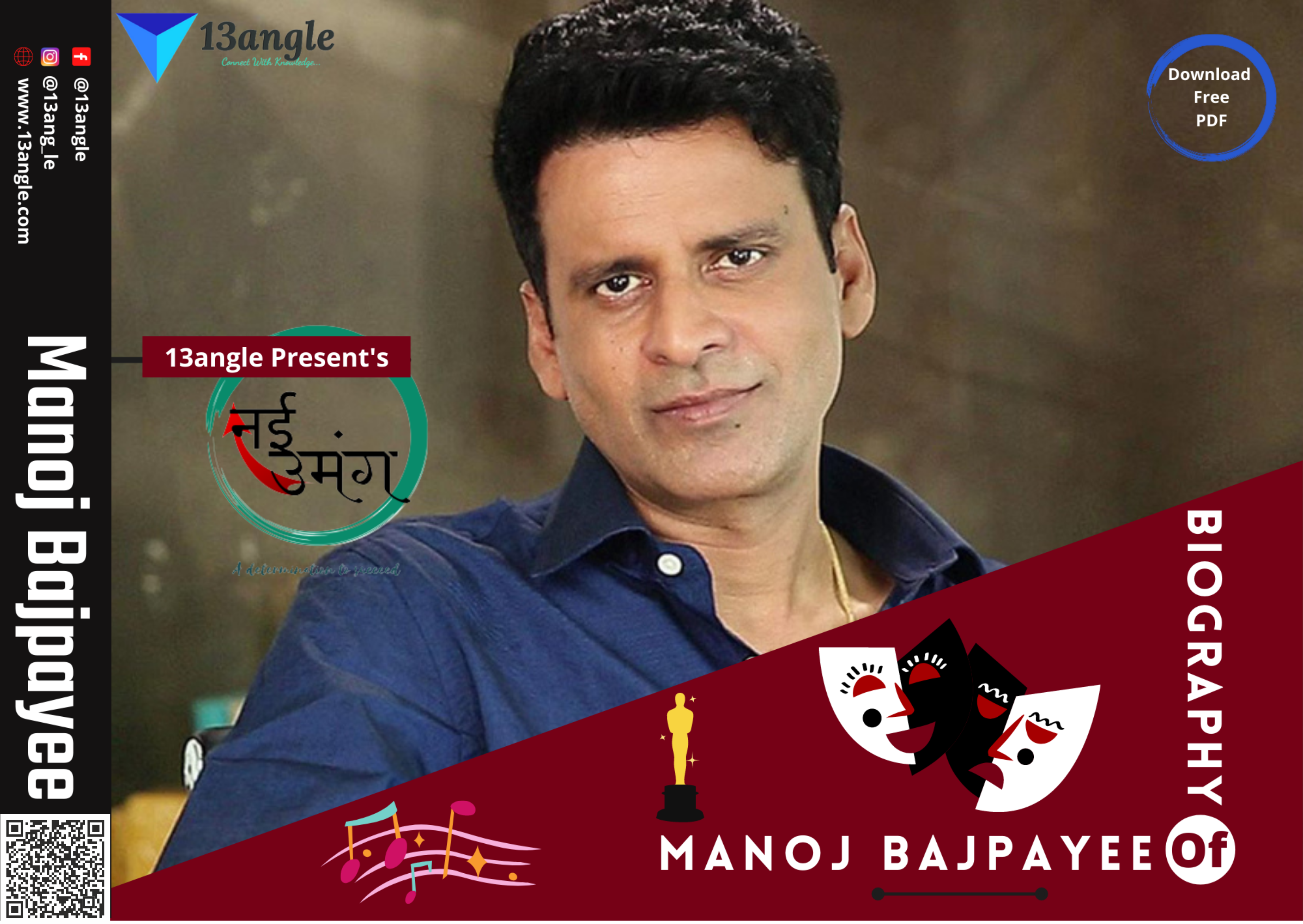Introduction

Inspiration often emerges from the unlikeliest of places, and in the earlier era, a region called “Bihar” found itself overshadowed by the dominant province of Bengal. During the tumultuous partition of Bengal in 1905, Bihar lacked its own distinct recognition and was enveloped in the atmosphere of Bengal’s dominance. But within this forgotten land, a remarkable figure emerged, destined to change the course of Bihar’s history and bring it into the limelight.
Lord Curzon’s divisive policy of “Divide and Rule” sought to separate Bihar and Orissa from Bengal, further isolating Bihar from the nation’s consciousness. It seemed as though Bihar’s significance had been diminished, but destiny had other plans in store.
In the midst of this obscurity, Sachchidanand Sinha, an extraordinary individual, stepped forward to claim his rightful place in the annals of history. Though his name might be unfamiliar to many, this biography aims to shine a light on the remarkable life and contributions of Dr. Sachchidanand Sinha.
A multifaceted personality, Dr. Sinha was not only an eminent educationist but also a visionary politician, prolific author, and dedicated advocate. His journey towards prominence took flight when he assumed the role of the interim president of the Constituent Assembly, a momentous position that allowed him to shape the nation’s future.
Through his exemplary leadership, Dr. Sachchidanand Sinha not only breathed life into the dreams of Bihar but also etched his name in the hearts of the people. His unwavering dedication to his motherland and the relentless pursuit of a separate state for Bihar became the driving force behind his remarkable journey.
Early Life
Sachchidanand Sinha was born on 10th November 1871 in Arrah, a town situated in the district of Bengal Presidency, which is present-day Bihar. He hailed from a Kayastha family, and his father, Bakshi Shiv Prasad Sinha, held the esteemed position of the chief Tehsildar of Dumaranya Maharaj.
Sachchidanand began his education at a local school and later pursued his graduate studies at both Patna and City College, Calcutta. However, his academic pursuits extended far beyond the shores of India. At the young age of 18, on December 26th, 1889, he embarked on a journey to London to study Law. During his time in England, he had the privilege of associating with prominent sociological leaders like W.C Banerjee and S.N Banerjee. Notably, he even campaigned alongside Dadabhai Naoroji in his efforts to contest elections and gain a seat in the House of Commons.
Additionally, Sachchidanand forged meaningful connections during his time abroad. He formed friendships with the eminent founders of “Anjuman A Islamia,” Mazharul Haque, and Ali Imam of Bihar. Actively participating in the meetings of Anjuman, he showed a keen interest in the social and cultural affairs of his homeland.
It is fascinating to note that during his stay in England, Sachchidanand Sinha had a noteworthy classmate – none other than Mahatma Gandhi. Their paths crossed in the pursuit of knowledge and personal growth, laying the foundation for a future association in India’s independence struggle.
Sachchidanand Sinha’s early life reflects a thirst for knowledge and a desire to engage with the leading thinkers and activists of his time. These formative experiences would go on to shape his future endeavors, making him a pivotal figure in India’s political and social landscape.
Situation Of Bihar On That Time
Throughout ancient history, Bihar held a significant position as the center of Indian civilization. It witnessed the rise and fall of powerful dynasties, leaving a profound impact on the region’s cultural and socio-religious landscape. The land of Bihar was once graced by the prominence of influential dynasties such as the Haryanka, the Maurya, and the Gupta.
During this era, Bihar became a pivotal hub for the Socio-Religious movement, particularly with the emergence of Buddhism and Jainism. These spiritual ideologies found fertile ground in Bihar, and monastic centers like Nalanda and Vikramashila became renowned centers of learning and enlightenment.
However, as the empires fell, and dynastic power shifted, Bihar’s fortune took a different turn. The center of power moved towards regions like Kannauj, Agra, and Delhi in the west, and Bengal in the east. Despite attempts by rulers like Sher Shah Suri to restore Bihar’s former glory after defeating Humayun, the region faced suppression under the Mughals, relegating it to the margins of influence.
Despite these challenges, Bihar’s historical significance and contributions to Indian civilization cannot be overlooked. Its rich heritage, deeply rooted in the legacies of ancient dynasties and religious movements, have left an indelible mark on the region’s identity.
As we explore the life and achievements of Sachchidanand Sinha, we’ll also uncover the role he played in reviving the spirit of Bihar, striving to restore its cultural and political significance on the national stage. His efforts would eventually contribute to reshaping the course of Bihar’s history and ensuring its place in the annals of India’s journey to independence and progress.
Identity Humilitation
During Sachchidanand Sinha’s time studying in London, he experienced a disheartening reality – his birthplace, Bihar, was virtually unknown to many. This lack of recognition stemmed from the fact that Bihar was under the jurisdiction of the Bengal Presidency and did not exist as a distinct entity on India’s map. Consequently, Sachchidanand faced an acute identity crisis, realizing that Bihar was gradually slipping into a state of obscurity and humiliation.
Even while returning from London, he encountered a fellow passenger, a Punjabi man, who exhibited the same lack of familiarity with Bihar, often confusing it with Bengal. This further emphasized the extent to which Bihar’s identity had been overshadowed and overlooked.
Historical facts reveal that during the reign of Emperor Akbar, Bihar was positioned between the Subas (provinces) of Awadh and Bengal, making it a sort of geographical buffer zone. Over time, Bihar’s unique identity and significance seemed to have been diminished in the broader political landscape.
The turning point came with the Treaty of Allahabad in 1765, following the pivotal Battle of Buxar. This treaty marked the decisive moment when Bihar was separated entirely from Bengal. The Diwani Rights, which granted the right to collect revenue, were bestowed upon the English East India Company, headquartered in Calcutta. Consequently, Bihar emerged as an independent entity, no longer overshadowed by its association with Bengal.
Sachchidanand Sinha’s deep understanding of Bihar’s historical and geopolitical context fueled his determination to address the state’s identity crisis and elevate its standing in the nation. His unwavering commitment to his homeland and his subsequent efforts would eventually play a pivotal role in shaping Bihar’s destiny and restoring its sense of pride and recognition.
After Returning To India From England
After Sachchidanand Sinha’s return to India from England in 1893, he was struck by a poignant sight at the railway station – a few Bihari Policemen donning the badge of the Bengal Police. This seemingly small yet symbolic incident highlighted the issue of Bihar’s identity being overshadowed by its association with Bengal. It served as a stark reminder of the prevailing discrimination that Biharis faced in terms of their political and historical recognition.
In the same year, Sachchidanand embarked on his career as a barrister at the prestigious Calcutta High Court. However, his passion for advocating for Bihar’s rights and recognition remained undeterred.
In 1896, he moved to the Allahabad High Court, where he had the opportunity to meet Justice Khudabaksh Khan. This meeting would prove to be a pivotal moment in Sachchidanand’s life. When Justice Khan was transferred to Hyderabad, he entrusted the responsibility of his library to Sachchidanand Sinha, declaring him the secretary of Khudabaksh Library from 1894 to 1898. This appointment allowed Sinha to deepen his knowledge and understanding of the historical and cultural heritage of the region.
Throughout his career and experiences in the legal profession and his involvement with the library, Sachchidanand Sinha became increasingly determined to address the discrimination faced by Biharis. He felt compelled to take action and advocate for the creation of a separate province that would grant Biharis the recognition and autonomy they rightfully deserved.
These early encounters and experiences fuelled Sachchidanand Sinha’s commitment to his cause, and his subsequent journey would lead him to become a prominent figure in the fight for Bihar’s rights and identity. His efforts would culminate in shaping the course of Bihar’s history and politics, ultimately contributing to the realization of the dream of a separate province for Biharis.
Contribution In Creating A Separate Province As Bihar
Driven by a strong sense of determination, Dr. Sachchidanand Sinha was resolute in his efforts to address the administration’s discriminatory practices and the historical injustices faced by Biharis. He firmly believed that it was time to fight for the creation of a separate province that would grant Bihar the recognition and autonomy it deserved.
One of the key issues that deeply troubled Dr. Sinha was the hegemony of Bengalis in Bihar’s economy and politics. The Bengali community’s control over these spheres had led to a skewed distribution of power and resources, leaving Biharis at a disadvantage. Adding to the injustice, the Bengalis were accused of harbouring antipathy towards English education, depriving their Bihari counterparts of access to quality education and opportunities for advancement.
The unfair dominance of Bengalis over the political and economic landscape of Bihar became a rallying point for the advocates of Bihar. Dr. Sinha, with his legal acumen and passion for justice, became a prominent voice in this movement. In 1894, he presented a compelling memorandum to the Deputy Governor, Sir Charles Dalimer, articulating the urgent need to separate Bihar from the Bengal province.
Through this memorandum, Dr. Sinha sought to shed light on the distinct identity and aspirations of Bihar, which had been overshadowed and marginalized for far too long. He eloquently argued for the establishment of a separate administrative entity for Bihar, one that would afford its people the opportunity to chart their own course and shape their own destiny.
Dr. Sachchidanand Sinha’s unwavering commitment to this cause would eventually lead to significant developments in the struggle for Bihar’s autonomy and recognition. His courageous efforts in advocating for a separate province for Biharis laid the groundwork for the future transformation of Bihar’s political landscape and its journey towards empowerment and self-determination.
Started Publishing Newspaper
Shortly after arriving at the decision to champion the cause of a separate state for Bihar, Dr. Sachchidanand Sinha, together with his like-minded companions Hassan Imam and Mahesh Narayan, embarked on a powerful mission to shape public opinion in favour of their vision. They saw the establishment of a newspaper as a potent tool to advocate for their cause and ignite a “Bihari Renaissance.”
In line with this vision, they founded “The Bihari Times,” a newspaper dedicated to framing public opinion and garnering support for the idea of a separate province for Bihar. This publication served as a platform to articulate the aspirations and unique identity of the Bihari people, shedding light on the historical injustices and discrimination faced by the region.
As a prolific writer and thinker, Dr. Sachchidanand Sinha did not limit himself to just journalism. He took on the responsibility of enlightening the masses through the power of written words. Alongside Mahesh Narayan, he authored the influential books “Partition of Bengal” and “Separation of Bihar,” which offered well-researched and compelling insights into the historical context and rationale behind their demand for a separate state.
In 1918, Dr. Sinha joined hands with Syed Hassan Imam to launch another significant English newspaper, “Searchlight.” This new venture further expanded its reach and influence in shaping public opinion, not only in Bihar but also on a wider national scale.
Even beyond his journalistic endeavours, Dr. Sachchidanand Sinha’s commitment to the cause of Bihar’s recognition remained steadfast. He took on important roles as the publisher of “Indian Nation” and the editor of “Hindustan Review,” using these platforms to amplify the voices of the marginalized and advocate for social and political reforms.
Through his multifaceted contributions as a journalist, author, and publisher, Dr. Sachchidanand Sinha played a pivotal role in the intellectual and political discourse of his time. His unwavering dedication to the welfare and empowerment of Bihar and its people left an enduring impact on the course of Bihar’s history and its struggle for recognition and autonomy.
Entry Into the Politics
In the year 1910, Dr. Sachchidanand Sinha made his entry into politics and was elected to the Bengal Legislative Council. As a prominent voice advocating for the creation of a separate state for Bihar, he passionately raised the demand for Bihar’s recognition and autonomy. Dr. Sinha’s dedication to his motherland and his tireless efforts in laying the foundation for Bihar’s future became the driving force behind his political journey.
In 1910, he won his seat in the Imperial Legislative Council, representing the Bengal quota, and was joined by Maulana Mazharul Haq, who won from the Muslim quota. Their victory marked a significant moment as they defeated four Maharajas, showcasing the strength and support behind their vision for Bihar.
From 1910 to 1920, Dr. Sinha held the esteemed position of a Maharaja and became a member and vice-chairman of the Central Council in 1921. His capabilities and dedication led to his appointment as the Earth Secretary and Law Minister, where he served diligently for five years, contributing to the governance and development of the region.
Dr. Sachchidanand Sinha’s political acumen and leadership qualities were further recognized when he became the First Deputy President of the Central Legislative Assembly in 1921, solidifying his role as a prominent national leader.
He continued to ascend to positions of influence, becoming a Member of the Governor’s Executive Council of Bihar and Odisha, where his expertise and vision contributed to shaping policies and decisions for the welfare of the people.
Dr. Sinha’s remarkable journey in politics also saw him assume the role of the President of the Legislative Council and the Chairman of the Odisha Boundary Commission, where he played a vital role in delineating territorial boundaries and ensuring a fair distribution of resources.
His contributions extended beyond politics into the realm of education, where he served as the Vice-Chancellor of Patna University from 1936 to 1945, actively promoting academic excellence and fostering intellectual growth.
Throughout his illustrious political career and multifaceted roles, Dr. Sachchidanand Sinha remained steadfast in his commitment to serving his homeland and working tirelessly to uplift Bihar’s status and empower its people. His leadership and accomplishments left an indelible mark on the political landscape and the social fabric of the region, earning him a place of honour in the annals of Bihar’s history.
Sachchidanand Sinha’s Marriage
In the year 1894, Dr. Sachchidanand Sinha entered matrimony with Radhika Devi, who hailed from a Punjabi family in Lahore. Radhika Devi belonged to a family with a strong educational background, and her union with Dr. Sinha marked the beginning of a new chapter in both their lives.
Radhika Devi’s upbringing in an intellectually stimulating environment must have complimented Dr. Sinha’s own passion for education and learning. Their marriage likely provided a supportive and intellectually enriching partnership, where they could share their thoughts and aspirations.
Tragically, Radhika Devi’s life came to an untimely end on 30th July 1919. Her demise must have been a devastating loss for Dr. Sinha, leaving behind a void in his personal life. Despite the profound grief, Dr. Sinha’s commitment to his political and social endeavours likely persisted, driven by the memory of his late wife’s encouragement and support.
Though brief, their marital bond was likely characterized by mutual respect, affection, and shared values. Radhika Devi’s presence must have played a significant role in shaping Dr. Sachchidanand Sinha’s life, leaving a lasting impact on his journey as a political leader, educationist, and advocate for the rights of Bihar.
Beyond his professional achievements, it is the love and companionship shared with his wife that may have given Dr Sachchidanand Sinha strength during the challenges he faced in his quest for Bihar’s recognition and autonomy. Their union remains a poignant aspect of his personal history, reminding us of the multifaceted life of this great leader and the profound influences that shaped his character and ideals.
Contribution Towards Education
Dr. Sachchidanand Sinha’s contributions to the field of education were profound and far-reaching. In honour of his late wife, Radhika Devi, he established the Radhika Sinha Library, which stands as a testament to their enduring bond. The library, enriched by Dr. Sinha’s personal collection of over fifty thousand books, is regarded as one of the most prestigious libraries in the state. It serves as a hub of knowledge and learning, preserving and disseminating invaluable literary resources for generations to come.
Additionally, Dr. Sachchidanand Sinha made significant contributions to the development of education infrastructure. In 1924, he built his residence, which now stands as the “Bihar School Education Board.” This institution plays a crucial role in shaping the educational landscape of Bihar, overseeing the formulation and implementation of educational policies, and promoting academic excellence throughout the state.
Dr Sinha’s passion for literature and writing extended beyond his legal and political pursuits. In 1944, he authored two influential books, namely “Eminent Bihar Contemporary” and “Some Indian Eminent Contemporary,” showcasing his deep knowledge and understanding of prominent personalities of his time. Additionally, he authored “Iqbal – The Poet and his message,” a book delving into the works and philosophies of the celebrated poet, Allama Iqbal.
His service to the nation reached a pinnacle when he was appointed as the interim president of the Constituent Assembly on December 9th, 1946. During his tenure, the original copy of the Constitution was meticulously prepared. However, his declining health posed a challenge, and to ensure that he could participate in this historic moment, the copy was brought to Patna by special aircraft for his signature.
On 14th February 1950, Dr Sachchidanand Sinha, along with Dr Rajendra Prasad, became the last individuals to sign a copy of the constitution, symbolizing the culmination of a monumental effort to frame the nation’s guiding principles and laws.
Dr Sachchidanand Sinha’s commitment to education, literature, and the nation’s growth remains an enduring legacy. His contributions, both as a statesman and an educationist, have left an indelible mark on Bihar’s intellectual and political landscape, making him a revered figure in the history of India’s struggle for independence and its journey towards progress.
Death
On 6th March 1950, Dr Sachchidanand Sinha, a prominent leader, educationist, and statesman, passed away at the age of 79. His demise marked the end of an era, leaving behind a legacy that would be cherished and remembered by generations to come.
Throughout his illustrious life, Dr. Sinha dedicated himself to the service of his homeland and the betterment of its people. His contributions to the political, educational, and literary spheres were exceptional, earning him the respect and admiration of his peers and fellow countrymen.
As the first President of the Constituent Assembly, he played a crucial role in the formulation of India’s constitution, leaving an indelible mark on the nation’s legal and political framework.
His vision for Bihar’s recognition and autonomy drove him to establish institutions like the Radhika Sinha Library and the Bihar School Education Board, solidifying his commitment to the cause of education and knowledge dissemination.
With his prolific writings and insightful books, he enriched the literary landscape and shed light on eminent personalities and important aspects of India and Bihar’s history.
The passing of Dr. Sachchidanand Sinha marked the end of an extraordinary journey of a man who had dedicated his life to the service of his country and his people. His legacy would continue to inspire future generations to work towards the progress and prosperity of their homeland. Though he may have left this world, his ideas, values, and contributions will forever be etched in the collective memory of the nation, making him an enduring figure in India’s history and a beacon of inspiration for all.
Top 13 Interesting Facts
The first telegram from India was sent by Dr. Sachchidanand Sinha to the US State secretary, Acheson
Apart from being a lawyer, Dr. Sachchidanand Sinha was a journalist, educationist, and politician.
He is also called the father of modern Bihar.
After the formation of the constituent assembly on 9th December 1946, he was made the interim president.
During his studies as a barrister, Gandhiji was his classmate.
He was appointed as the secretary of Khudabaksh Library from 1894 to 1898.
He, along with two persons, Syed Hassan Imam and Mahesh Narayan published a newspaper, “The Bihar Times” which will form the public opinion in the favour of a separate state.
Dr.Sinha called the birth of his newspaper, ”The starting point of a newspaper”.
Dr. Sinha published a book with Mahesh Narayan titled, “The Partition of Bengal” and “Separation of Bihar” in which they denounced the partition of Bengal of 1905.
Dr. Sinha was elected to the Bengal Legislative Council which dealt with the rising demand for a separate province of Bihar.
He became the first Deputy President of its legislative council.
He was also a member of the Governor’s executive council of Bihar and Odisha Boundary Commission in the year 1930.
He was also appointed as the Vice-Chancellor of Patna University from 1936 to 1945.
Conclusion
Dr. Sachchidanand Sinha’s life journey stands as a shining example of dedication, resilience, and unwavering commitment to a noble cause. From his early struggles against identity humiliation to his tireless efforts in advocating for a separate province for Bihar, he demonstrated remarkable fortitude and foresight. Dr. Sinha’s contributions to education, literature, and politics have left an enduring legacy, inspiring generations to come.
As an educationist, he believed in the transformative power of knowledge and worked passionately to establish institutions that continue to nurture young minds to this day. His Radhika Sinha Library and the Bihar School Education Board serve as beacons of wisdom, fostering a culture of learning and enlightenment.
Dr. Sachchidanand Sinha’s political journey was marked by courage and conviction. As the first President of the Constituent Assembly, he played an instrumental role in shaping India’s constitutional framework, leaving an indelible imprint on the nation’s governance.
His life’s work exemplifies the spirit of selfless service and advocacy for the greater good. Through his writings and books, he endeavoured to shed light on eminent personalities and important historical events, enriching our understanding of our past and guiding us towards a brighter future.
Dr. Sinha’s passing marked the end of an extraordinary era, but his ideals and values continue to inspire us. His commitment to his homeland and his tireless efforts in fighting for recognition and autonomy for Bihar resonate with us today. His journey is a testament to the power of perseverance, the pursuit of knowledge, and the unwavering belief in one’s convictions.
In this ever-changing world, let us draw inspiration from Dr. Sachchidanand Sinha’s life and work. May we strive to be agents of positive change, advocates for justice, and champions of education. Let us emulate his dedication and commitment to the welfare of our nation and our people.
As we carry his legacy forward, let us remember that our actions today can shape the course of history tomorrow. Let us work together to build a brighter future, where every individual’s identity is celebrated, and every voice is heard.
Dr. Sachchidanand Sinha’s life journey reminds us that ordinary individuals can make an extraordinary impact on the world. Let us be driven by a vision for a better tomorrow, united in our pursuit of progress and unity.
In honouring his memory, let us stand firm in our values, resolute in our purpose, and compassionate in our deeds. May we be inspired to create a world that cherishes diversity, embraces knowledge, and celebrates the spirit of humanity.
As we reflect on the life of Dr. Sachchidanand Sinha, let us remember that greatness lies not in grand gestures, but in the small acts of kindness, dedication, and perseverance that make a difference in the lives of others.
Let us walk in the footsteps of this visionary leader, writing our own stories of hope, progress, and empowerment. Together, we can build a brighter, more inclusive future for our nation and the generations to come.
FAQs About Dr. Sachchidanand Sinha
Dr. Sachchidanand Sinha was a prominent Indian leader, educationist, and statesman. He played a significant role in shaping India’s political landscape as the first President of the Constituent Assembly, actively contributing to the formulation of the country’s constitution. His contributions to education were profound, as he established institutions like the Radhika Sinha Library and the Bihar School Education Board. Moreover, Dr. Sinha was an accomplished writer and author, producing influential books on various historical and contemporary subjects.
One of the primary challenges Dr. Sinha encountered was the historical and political discrimination faced by Bihar. Being under the Bengal Presidency, Bihar’s identity was overshadowed, and its political and economic landscape was dominated by Bengalis. Dr. Sinha staunchly raised the demand for a separate state, overcoming obstacles and working relentlessly to highlight Bihar’s unique identity and the need for autonomy.
Dr. Sinha’s commitment to education was evident through various initiatives. He established the Radhika Sinha Library in memory of his late wife and donated an extensive collection of books, making it one of the most prestigious libraries in the state. He also played a pivotal role in founding the Bihar School Education Board, which has since been at the forefront of shaping Bihar’s educational landscape.
As the first President of the Constituent Assembly, Dr. Sinha played a pivotal role in shaping India’s constitution. His leadership and guidance were instrumental in formulating the nation’s legal and political framework, leaving a lasting impact on India’s governance and democracy.
Dr. Sachchidanand Sinha’s legacy remains an inspiration for future generations. His commitment to justice, education, and the welfare of Bihar and its people serves as a guiding light for leaders and advocates. His contributions to literature and history continue to enrich our understanding of Indian culture and heritage. He is remembered as a visionary leader who dedicated his life to the service of his country and the progress of its people.





